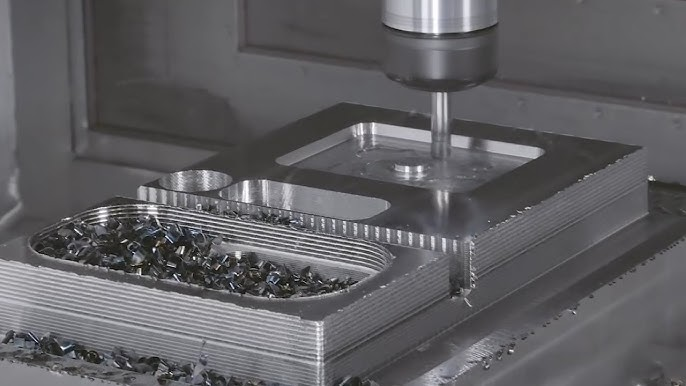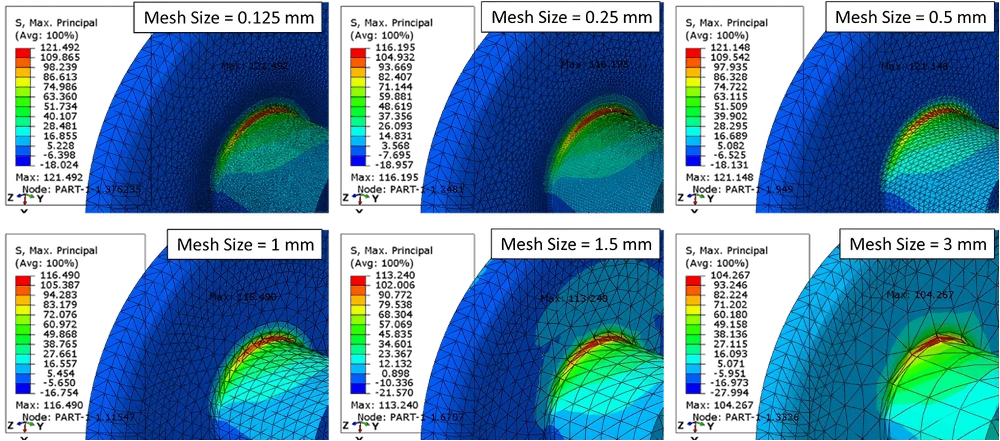What is Copper?
It is one among the non-ferrous metals that is most commonly utilized in cnc machining companies. It is a reddish-brown substance that is malleable, ductile, and soft. It is a good electrical conductor. It is mostly used to create electric cables and wires for electrical equipment and appliances, as well as in electrotyping, electroplating, and the production of coinage and household items. It can be forged, rolled, cast, or pulled into wires. Under normal circumstances, it is non-corrosive and has excellent weather resistance. Prototype machining services make extensive use of copper tubes. Making ammunition using it is another use. It is employed to create practical alloys with tin, zinc, nickel, and aluminum.
Properties of Copper
Very high thermal conductivity
Copper has a 60% greater thermal conductivity rating than aluminum, making it preferable for electrical wiring systems to have fewer thermal hot spots. Metals' conductivities in both the electrical and thermal directions result from the delocalization of their outer electrons.
Malleability
The capacity of a material to be molded into the required shape without breaking is referred to as malleability. Copper has a high degree of malleability. This enables it to be pounded, rolled into sheets, or bent in any direction without cracking. Thick wires may be wrapped around corners or shaped to suit the available area perfectly in electrical installations.
Ductility
The ability of a material to tolerate high tensile stress is referred to as ductility. This is any force that pulls two ends of a material apart from one another. Copper wires are formed in this manner: the material is stretched into a thin wire. Furthermore, for professional use, these wires must retain their strength without becoming brittle.
Exceptional electrical conductivity.
Copper's conductivity is 97% that of silver's. Due to its significantly lower cost and wider availability, copper has historically been the preferred material for energy transmission applications. However, aluminum is typically used in overhead high-voltage power lines since it is less expensive and weighs roughly half as much as copper wire with a comparable resistance. The thermal and electrical conductivities of metals are proportionate at a certain temperature, but as the temperature rises, the thermal conductivity increases while the electrical conductivity declines. The Wiedemann-Franz law measures this behavior.
Good corrosion resistance.
A coating of brownish-black copper oxide is formed when copper slowly interacts with ambient oxygen rather than water. Unlike rust that develops on iron in damp air, it shields the underlying metal from further corrosion (passivation). Aluminum brass, made of aluminum, and copper-nickel alloys have the best resistance to corrosion caused by seawater.
Good resistance against biofouling
In comparison to other materials, copper has a higher intrinsic resistance to biofouling/macrofouling, which is advantageous for maritime applications such boat hulls, sheathing structures, intake screens, sea water pipe work, water boxes, piling cladding, and mesh cages for fish farming.
Good machinability
Copper can be machined, but alloys work best for making complicated pieces since they are better at machinability.
Copper Alloys
The following two categories essentially describe the copper alloys:
Copper-zinc alloys (Brass).
Brass is the most commonly utilized copper-zinc alloy. Brasses come in a variety of varieties based on the ratios of copper and zinc. Fundamentally, this alloy is a 50% copper, 50% zinc mix. Brass's characteristics may be significantly altered by a small amount of an additional element. For instance, brass may be machined more effectively when lead (1–2%) is added. Although it has less thermal and electrical conductivity than copper, it is stronger. Brasses are readily soldered and have a high resistance to corroding from the air. They may be quickly made using techniques like spinning and electroplating with metals like nickel and chromium.
Copper-tin alloys (Bronze).
Bronzes are the common name for the copper and tin alloys. The practical range of composition is 5 to 25% tin and 75 to 95% copper. The metal is quite tough, resists surface abrasion, and may be readily formed or rolled into wires, rods, and sheets. Brass surpasses bronze in terms of corrosion resistance.
Applications of Copper
Products made of copper are frequently used in the construction of buildings, electrical grids, electronic devices, machinery for transportation, jewelry, and home appliances.
Construction Industry
Almost half of the world's copper supply is used in structures, including houses and workplaces. In actuality, the average house alone can hold 439 pounds of copper. Due to its malleability, copper is simple to solder while being robust enough to form the connections and junctions required in plumbing and electrical wiring.
Numerous products, including water pipes, refrigeration lines, heat pumps, and HVAC systems, use copper tubing. Not to mention the copper wire that connects to cable and telecommunications networks and transports energy throughout the house. Copper tubes and electrical lines are also seen in home appliances.

Electronic products
The best and most affordable metal for electronic equipment is copper because of its exceptional electrical conductivity qualities and abundance as a raw material. The bulk of modern consumer electronics items, including mobile phones, laptops, and TVs, as well as surveillance systems, power tools, and robotic vacuum cleaners, include red metal in the form of electrical wire and printed circuit boards. A lot of innovative copper-based goods, including "soft" electronic instruments like wearable biosensors and electronic paper, are currently in the research and development stages, according to Live Science.
Transportation
Copper is also extensively used in the transportation industry, including the construction of ships, railroads, airplanes, and vehicles.
Bolts, rivets, propellers, and condenser pipes are all often made of copper alloys in the shipbuilding industry. The metal is used to make a variety of train components, including motors, brakes, and controls, as well as components for electric and signal systems, in the railroad sector. Copper is needed by airplanes for electrical systems, hydraulics, and navigation. Brakes, bearings, connections, motors, radiators, and wiring all use copper in the automotive sector. Copper may weigh up to 50 pounds in a single standard vehicle.

Copper tube car break system
Since the technology in EVs is significantly dependent on copper, the market for EVs, which are becoming more and more common, is also enormous. In actuality, an EV uses two to four times as much copper as a regular car. Copper is another essential component for EV charging stations. Analysts predict that as a result of the growth of the EV industry, copper demand from green energy sectors would increase five-fold by 2030.
Industrial tools and machinery
Many different industries, including the petrochemical industry, employ industrial equipment and machinery that is built of copper. Among the machinery and hardware used in this process are copper pipe networks, electrical motors, evaporators, condensers, heat exchangers, valves, and tanks for corrosive media.
Corrosion-resistant copper alloys are essential components in the construction of underwater structures like offshore oil and gas drilling platforms and desalination equipment.
Similar to the electric vehicle (EV) sector, the production of wind turbines and solar energy systems uses copper as a raw material, which gives it the status of a cleantech metal.

Electric motor
Musical Instruments
Brass, a copper alloy, is used to make horns, trumpets, and saxophones, among other instruments.
Bronze, another copper alloy, is used to make certain acoustic guitar strings. The brilliant, vintage tone of phosphor bronze strings, which contain a small quantity of phosphorous, is well-known. Some triangles, tambourines, and cymbals include copper alloys as well. In other words, all of your home's musical instruments can help to create a cohesive copper color palette.

drum cymbals
Jewelry
Copper is a great material for jewelry as well. Even in the past, those who couldn't afford gold jewelry used copper ornaments instead. Due to its great ductility, it also provides freedom in design.
Even very high-quality gold jewelry is rarely made entirely of gold. Because gold is too soft to manufacture jewelry that can endure everyday use, a little quantity of copper (or zinc or nickel) is frequently added during the production process. While 24 carat gold jewelry is normally pure gold with no other metals added, purity requirements do vary from market to market.
The technique of combining additional metals with 24 carat gold (known as alloying) makes gold less malleable, although it is also done to modify its color. Rose gold, which is becoming increasingly popular, gets its pinkish color from the inclusion of copper—8.4% copper in the case of 22 karat rose gold.
Homes and Public places
Copper makes up a portion of every tiny brass accent in workplaces, schools, and homes. When manufacturing doorknobs and handrails in crowded areas with plenty of germs, copper, which is a component of brass, is especially advantageous due to its naturally occurring antibacterial characteristics. Moreover, copper is seen in furniture and aesthetic accents like bronze chandeliers. An alloy of copper and nickel is bronze.

Door knob
In addition to being beautiful, copper pots and pans have another function. Cooking with copper is preferred by chefs because it heats up evenly and prevents hot spots.
Benefits of Copper
Copper is a metal that is inherently resistant to corrosion. Even though copper is a strong metal, it is also lightweight, which makes it simpler to work with and reduces labor expenses. It is also easier to extend over great distances without support since it is dusty and flexible. In addition, it is lead-free and less costly than steel.
Due to the fact that copper is made of naturally occurring metal as opposed to manufactured plastic, which produces significant emissions during production, copper pipes are more ecologically friendly than plastic ones.
Contact CNC Milling China to learn more about copper and its alloys, as well as the advantages of employing them. Call us now to get a quotation on copper items.







